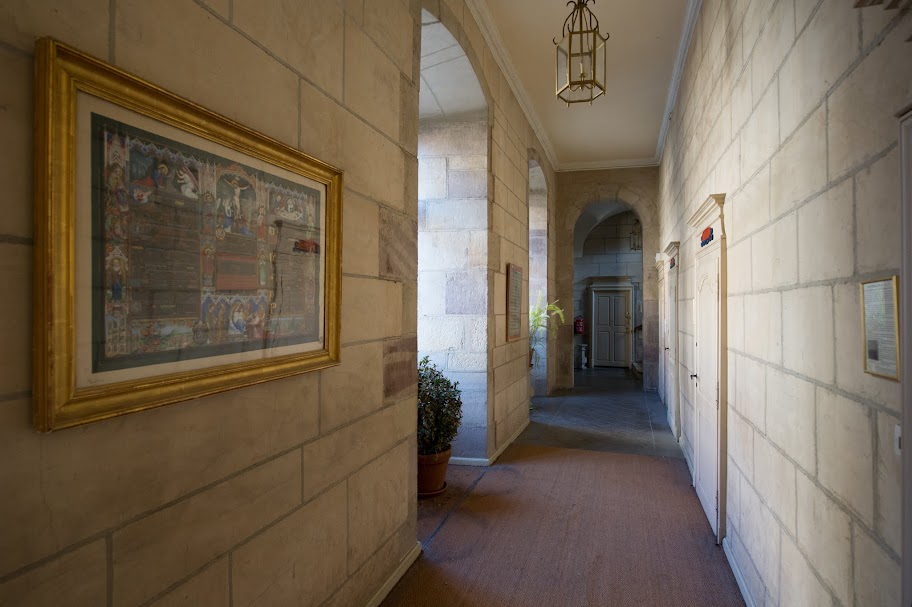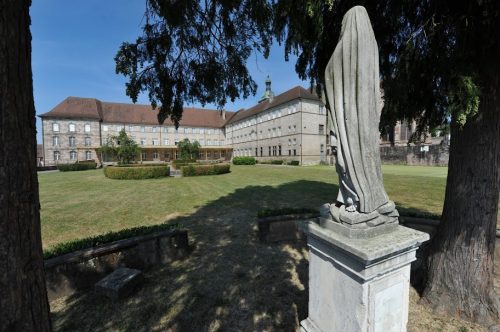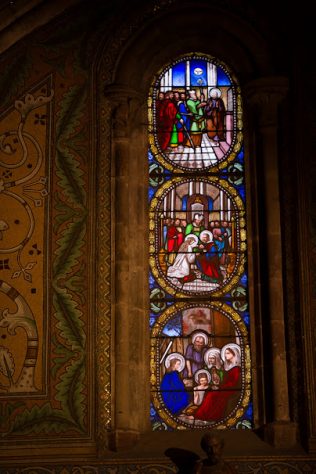History
of the Abbey
A remarkable site since the 6th century.
A story to rediscover

The cradle of Europe and Western monasticism, Luxeuil Abbey was founded in the 6th century by Saint Columbanus, an Irish monk. Located at a strategic crossroads, it quickly became a major historical site in Europe and played a central role in the Christianization of the West. Nothing remains of the original monastery, the current buildings having been built between the 17th and 18th centuries. Today, the Via Columbani still offers a cultural itinerary that connects the various sites founded by Saint Columbanus and his disciples, testifying to the importance of this monastic network in the history of Europe.
A Cultural Heritage
For centuries, Luxeuil Abbey has been a major intellectual and artistic center. It contributed to the spread of Christian culture and the preservation of the knowledge inherited from the Antiquity.
In 1950, gathering the founders, it was the site of preparations of the European Coal and Steel Community (ECSC), which prefigured the construction of Europe, underscoring the historical and symbolic importance of this place. Saint Columbanus is often cited as one of the « founding fathers of Europe. »

A heritage to be preserved
The abbey’s buildings, partially accessible to the public, bear witness to its rich and complex history. Luxeuil Abbey is much more than a simple historical monument; it is a place imbued with the spirit of those who lived here, a symbol of European unity, and a living testament to the cultural heritage of the West. Its energy is just waiting to shine forth again thanks to the investment of its new owners.

